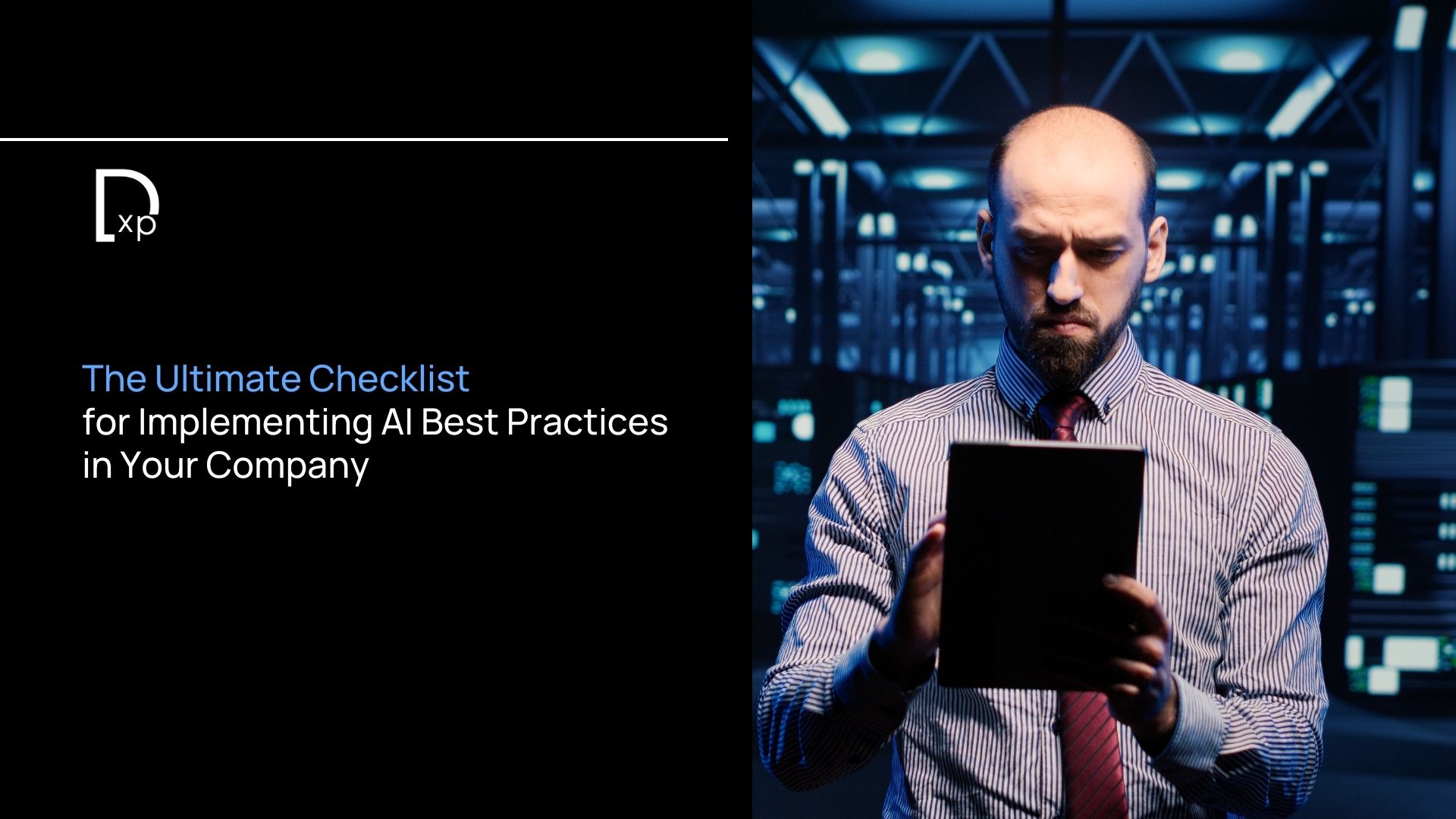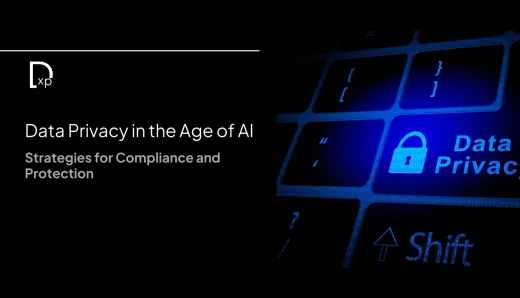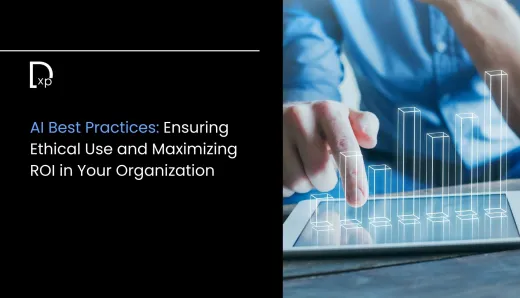The Ultimate Checklist for Implementing AI Best Practices in Your Company

AI is no longer a moonshot—it’s mission-critical. Whether you’re optimizing workflows, personalizing customer journeys, or forecasting market trends, artificial intelligence is rewriting how businesses operate. But here’s the truth: AI success doesn’t come from tech alone. It comes from structure, culture, and a clear-eyed approach to execution. That’s why AI best practices aren’t just “nice-to-haves”—they’re the bedrock of intelligent, scalable, and responsible deployment.
Leaders who want to harness AI for impact need more than vision. They need a checklist. A blueprint. A north star. This isn’t just about avoiding risk—it’s about unlocking real value. The companies that win with AI aren’t the ones with the flashiest models—they’re the ones with the most disciplined, thoughtful, and human-centered approach to building and deploying them.
Here’s your ultimate checklist for implementing AI best practices that don’t just check boxes—but drive transformation.
Define the Problem Before You Pick the Tool
AI is powerful, but it’s not a magic wand. The biggest mistake companies make is starting with the technology, not the problem. Before launching any initiative, ask: What are we trying to solve? What inefficiencies exist today? What decisions are being made too slowly, too inconsistently, or too expensively?
This isn’t just about ROI—it’s about relevance. AI should never be deployed for the sake of novelty. It should solve real business challenges, aligned with strategic priorities. Purpose is your starting point—and your compass.
Secure Executive Buy-In and Cross-Functional Ownership
AI isn’t an IT project. It’s an organizational shift. That’s why one of the most important AI best practices is executive alignment. The C-suite must support AI as a strategic initiative, not just an experiment. Without leadership buy-in, projects stall. With it, AI becomes a catalyst for cultural change.
But support from the top isn’t enough—you need collaboration across departments. From legal and compliance to marketing and HR, everyone touches data, and everyone is impacted by AI. Build cross-functional teams to guide development, implementation, and governance. AI is everyone’s business now.
Audit Your Data Infrastructure
No data, no AI. It’s that simple. Before building models, you need to assess your data readiness. Is your data accessible? Is it accurate? Is it secure? Are there gaps in volume, structure, or quality that will undermine your outcomes?
Your data audit should include more than technical standards. Evaluate whether your data collection and usage practices meet regulatory requirements and ethical expectations. Biases in data become biases in outcomes. Incomplete data leads to poor predictions. Good AI begins with great data.
Design for Transparency and Explainability
AI that can’t be understood can’t be trusted. Whether you're deploying customer-facing chatbots or internal forecasting models, you need explainability baked into the system. What inputs go into the model? How does it weigh variables? What logic drives its decisions?
Transparency isn’t just a technical feature—it’s a business advantage. It improves trust with customers. It streamlines compliance. It reduces risk. Make it a policy, not an option.
Embed Privacy and Ethics from the Start
Privacy isn’t a checkbox—it’s a strategic pillar. And it must be designed into your AI systems from day one. That includes data minimization, clear consent, secure storage, and anonymization where possible.
But privacy is just the beginning. You also need ethical oversight. What happens if the model’s decisions are biased? Who’s accountable when things go wrong? Responsible AI requires a framework that includes bias detection, impact assessment, human oversight, and clear escalation paths. Build these into your process—not as reactions, but as requirements.
Start Small, Measure Clearly, Scale Wisely
AI implementation isn’t an all-or-nothing game. One of the most effective AI best practices is to begin with a pilot. Choose a focused, high-impact use case. Prove value. Learn. Then scale.
But scaling doesn’t mean blindly expanding. It means measuring what matters—accuracy, time saved, costs reduced, satisfaction improved. Tie every AI deployment to clear KPIs. And iterate constantly. AI isn’t a product you ship—it’s a system you evolve.
Train Your Team, Not Just Your Model
The best AI systems in the world are useless if no one knows how to use them—or if teams are afraid of what they don’t understand. That’s why education is essential. Train your people to interact with AI tools. Build data literacy across the organization. Demystify the technology.
This is not about turning everyone into a data scientist. It’s about giving every team the confidence to ask smart questions, interpret outputs, and contribute to continuous improvement. AI is a team sport. Equip your team to play.
Create an AI Governance Framework
Governance is the difference between experimentation and sustainable deployment. You need policies around data access, model auditing, version control, and performance review. Assign ownership. Establish ethics boards. Create feedback channels for employees and users alike.
Governance also means regulatory compliance. Stay ahead of data privacy laws like GDPR, CCPA, and the upcoming EU AI Act. Compliance isn’t just about avoiding fines—it’s about building systems worthy of trust.
Don’t Lose the Human in the Loop
AI excels at speed, pattern recognition, and prediction. But empathy? Context? Ethics? Those are human skills—and they’re more important than ever. One of the most powerful AI best practices is keeping humans in the decision-making loop, especially in sensitive areas like hiring, lending, healthcare, or legal decisions.
Build systems where humans oversee, interpret, and validate AI decisions. Let AI augment judgment—not replace it. Human-centered AI isn’t slower. It’s smarter.
Tell the Story
Lastly, communicate. Internally, share the “why” behind your AI strategy. Externally, be transparent about how you use AI, what data you collect, and how it benefits customers. The story you tell around AI sets expectations, builds trust, and shapes brand perception.
AI without a story feels cold. AI with a story becomes a movement—one your team and your market can get behind.
The Checklist That Drives Change
Implementing AI isn’t about ticking boxes. It’s about building a foundation for intelligent, ethical, and scalable growth. It’s about using AI not just to automate, but to elevate—your people, your processes, and your purpose.
So whether you’re just starting out or scaling up, use this checklist not just as a guide—but as a contract. A contract between your company and the future you're building with AI. One built on trust, not shortcuts. Impact, not impulse. Strategy, not hype.
Because when you implement AI best practices with intention, the return isn’t just performance—it’s transformation.




